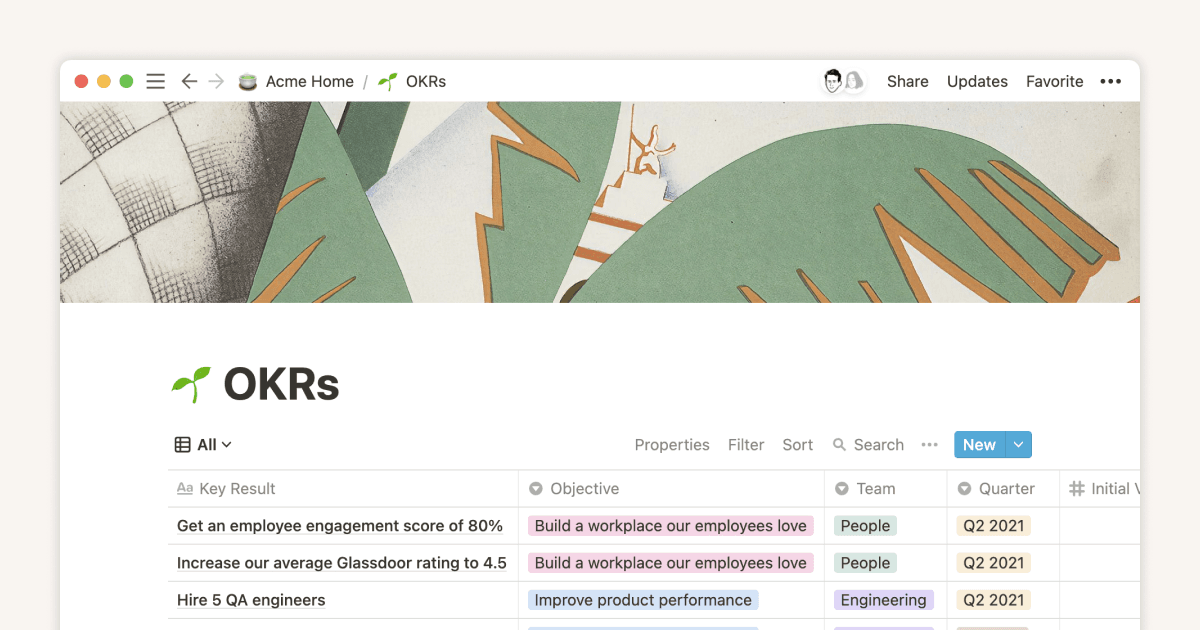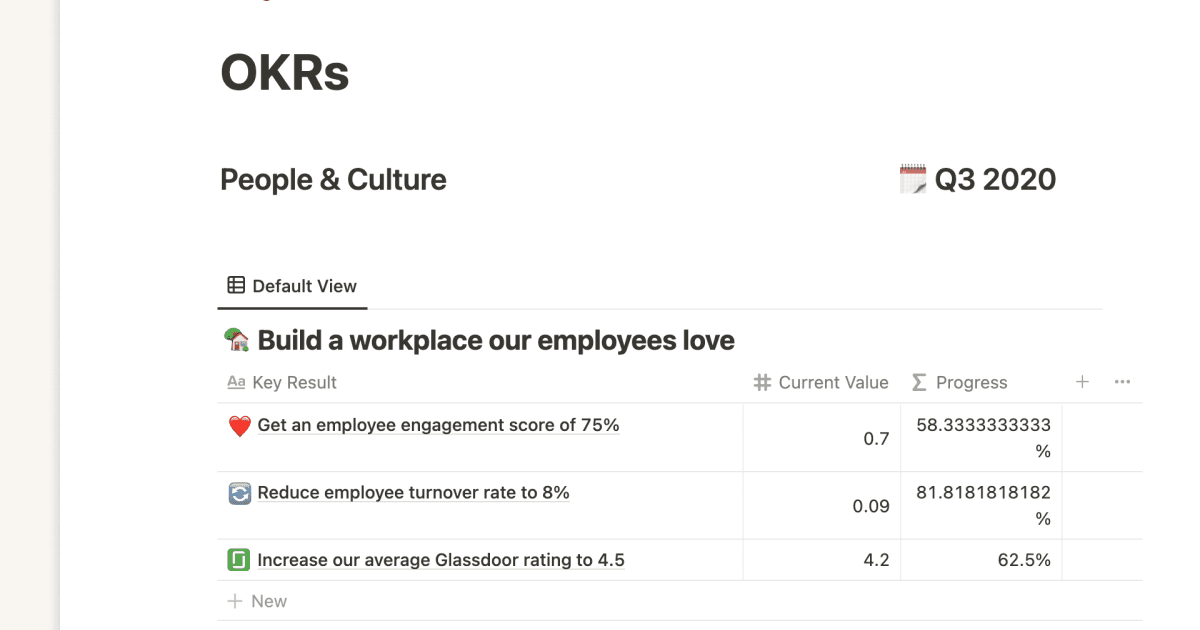OKRs

About this template
OKR (Objectives and Key Results):
OKR is a goal-setting framework that's gained popularity for its simplicity and effectiveness. It involves setting objectives and defining key results to measure progress towards achieving them.
Objective: This is the overarching goal you want to achieve. Objectives are aspirational and provide direction. They answer the question, "What do we want to accomplish?" Objectives are typically qualitative and are aligned with the organization's mission and vision.
For example, an objective could be "Improve customer satisfaction."
Key Results: Key Results are specific, quantifiable, and time-bound outcomes that determine whether the objective has been met. They answer, "How will we know when we've achieved our objective?" Key Results are the metrics that allow you to track your progress.
For the objective "Improve customer satisfaction," key results could include:
- "Increase Net Promoter Score (NPS) from 40 to 70 within the next quarter."
- "Reduce customer support response time from 24 hours to 8 hours within six months."
- "Achieve a customer retention rate of 90% by the end of the year."
Alignment: OKRs are often cascaded throughout an organization, with individual or team-level OKRs aligning with higher-level objectives. This alignment ensures everyone's efforts are directed towards the same strategic priorities.
Regular Check-Ins: OKRs require periodic check-ins, often weekly, monthly, or quarterly, to monitor progress and make necessary adjustments.
OKRs provide a structured approach to goal setting, making it easier to track progress, prioritize activities, and adapt to changes. They are widely used in businesses, teams, and individual settings to drive focus, alignment, and measurable results.
Instructions for the template:
Once objectives have been established, it is essential to define associated key results. In addition to specifying the result itself, one must input the start date as a reference for when the pursuit towards this result begins and the end date, signifying when we aim to achieve it.
Furthermore, it is crucial to provide the initial value, the current value, and the target value for these key results.
Behind the scenes, a series of calculations take place to ensure that users can effectively track their progress in relation to the target. The status of the target is categorized as on track, behind, or at risk of failing based on these calculations.
These calculations operate on a pro-rata basis, which considers both the time required to achieve the key result and the "distance" to the target value.
It's worth noting that the exact percentage used in the formula can be adjusted to align with your judgment of the "project's status."


![A template preview for Objective and Key Results [OKRs]](/_next/image?url=https%3A%2F%2Fs3.us-west-2.amazonaws.com%2Fpublic.notion-static.com%2Ftemplate%2Fbfd22ced-5afa-4093-9170-7d6ea5e2d9e3%2F1727529744789%2Fdesktop.jpg&w=3840&q=75)







